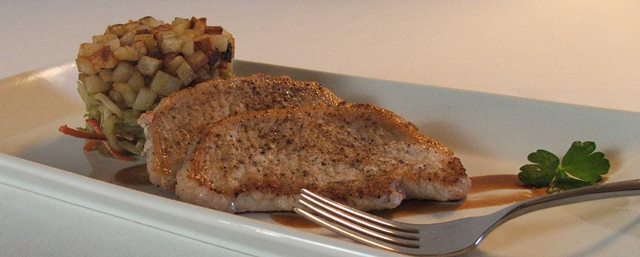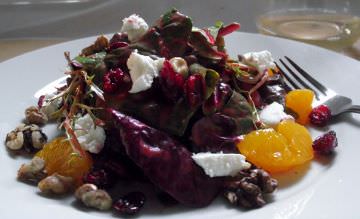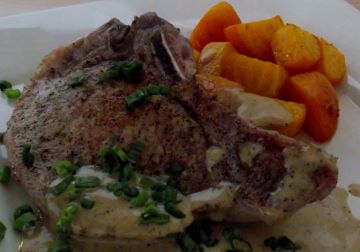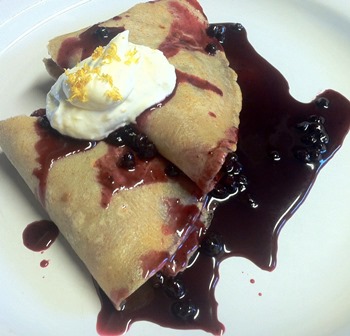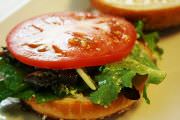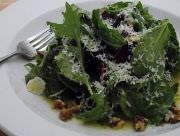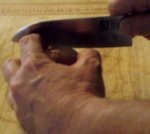How To Plate - Food Presentation Ideas
How To Plate So Your Food Looks Good Enough To Eat
Food garnishing and presentation are about the arrangement of food on a plate, but it goes beyond that. It really becomes an extension of a chef's particular style of cooking. Take my style of cooking, for example, I tend to lean toward comfort food dishes. Since I use really nice products I don't have to do a lot of manipulation of the ingredients, rather, I let the ingredients speak for themselves.
This style of cooking doesn't really lend itself to "high art" presentations. That's not to say it can't be done, but to me it doesn't feel right to do that. For me, the finished ingredients should be plated with little embellishment, because that is what comfort food is about.
Keeping that in mind, you still want your plates to look good. Let's face it, long before you pick up a fork and dig in your eating that dish with your eyes.
Eating goes beyond presentation to include your palate. You can read more about the way you taste and how to develop a grateful palate.
Composition Of Plates - Some Food Presentation Ideas
How to plate so that the textures, flavors and colors in your food work in harmony with each other to bring out the best possible combinations.
Texture creates contrasting feelings in your mouth and adds another dimension to the plate.
Base flavors like salt, fat, and acid provide balance between flavors.
- Salt - balance between fat and acid.
- Fat - balance between salt and acid.
- Acid - provides balance between fat and salt.
Regarding color the aim is to try and build your plates with contrasting colors to make them stand out. However, you should not be adding something random just to add color - that makes no sense at all.
When you are thinking about how to plate something, keep in mind that presentation shouldn't compromise taste.
Blanching green vegetables before serving them will help keep them vibrant.
Using large and small plates works well to present contrasts. Be sure that you don't overcrowd the plates
Use squeeze bottles and paint brushes to spread sauces on plates.
In 1984 Jeremiah Tower opened Stars in San Francisco. He created the "stacked presentation" by stacking proteins on top of starches with vegetables along side, vertically if possible. It quickly swept through the culinary world. A stacked presentation makes an amazing impact. Be careful not to overdo it.
Neutral plates are best for showing off your food. Plates with patterns or stencils tend to detract from the dish. Of course there are exceptions but as a general guide choose white plates. For contrast use square plates with round food and round plates with square food.
Use the borders of plates to carry complimentary contrasting sauces, by squeezing a line across one border.
If your serving a contemporary or classic meal with a protein, starch, and vegetable the best way to plate it, is to clock it. Place proteins at six o’clock, starches at 10 o’clock, and vegetables at two o’clock. The positions on the plate are a reference to the way food is presented to a customer, the protein is always facing the customer, hence six o'clock.
Food moulds make a great presentation, particularly when you stack the ingredients or create layers. The thinner the layer the more pronounced the effect. Cookie cutters can be used for stacked presentations as well as empty cans with both ends cut out.
Repeating the same pattern can be an effective way of presenting food. Place three similar pieces of a protein side by side and top with different ingredients or garnishes.
A garnish should never overpower a dish. It should embellish or enhance the plate. When you're thinking about how to plate something, and what garnish to use be certain that it matches the ingredients and flavor of the plate.
Some other possible ways to create balance: hot, cold, coarse, smooth, crunchy, soft, crisp, spicy, acidic, sweet, sour, and bitter.
You want to create meals that bring these elements together in a natural way, rather than something contrived. That really is how to plate.
Blueberry Crepes with Sweet Ricotta and Lemon Zest:
Three contrasting colors
Three contrasting flavors
Three contrasting textures
